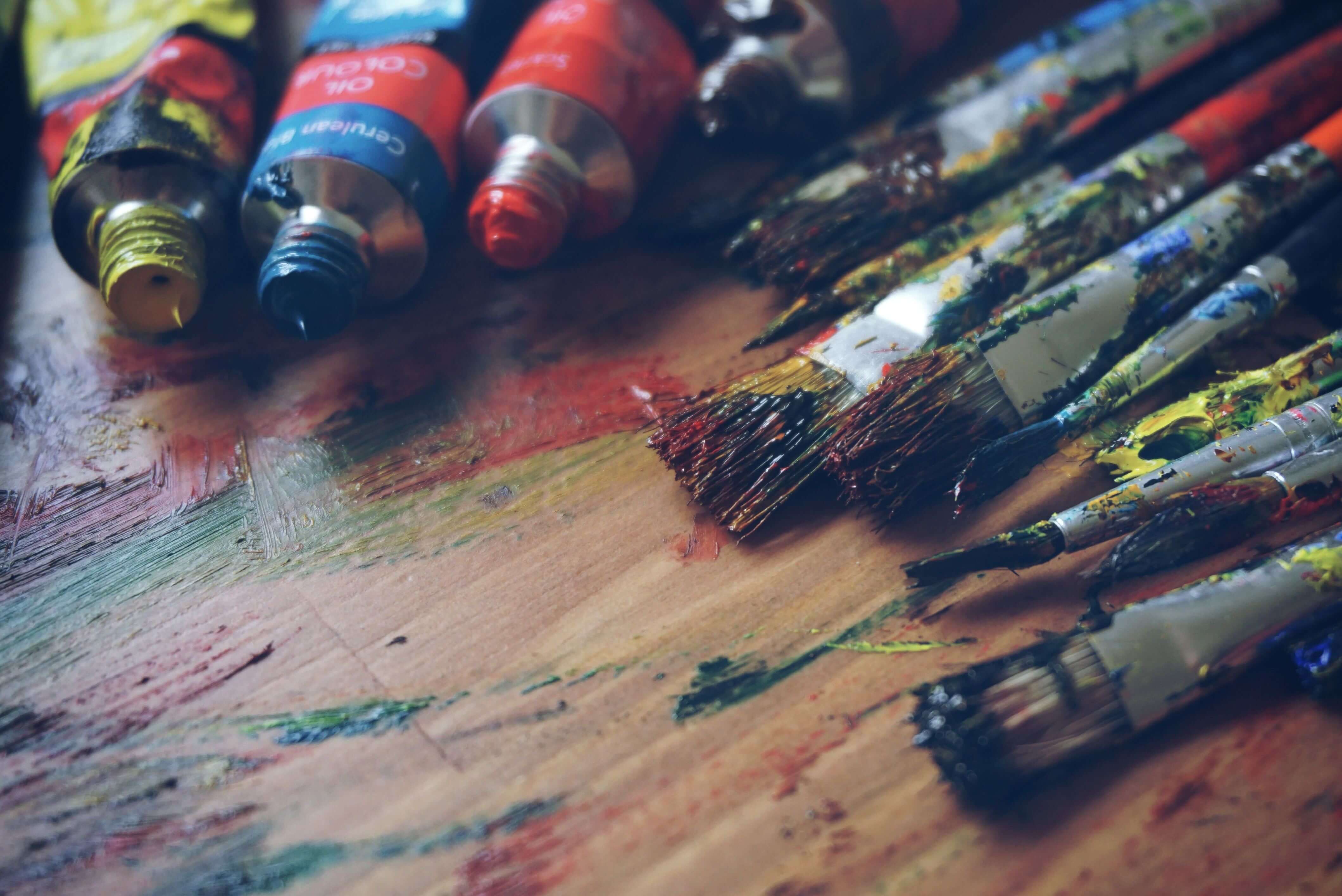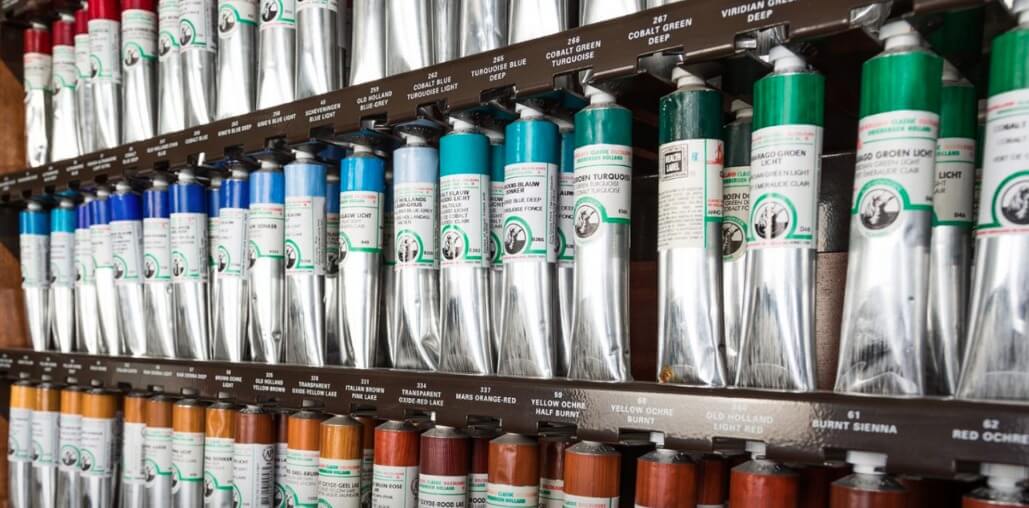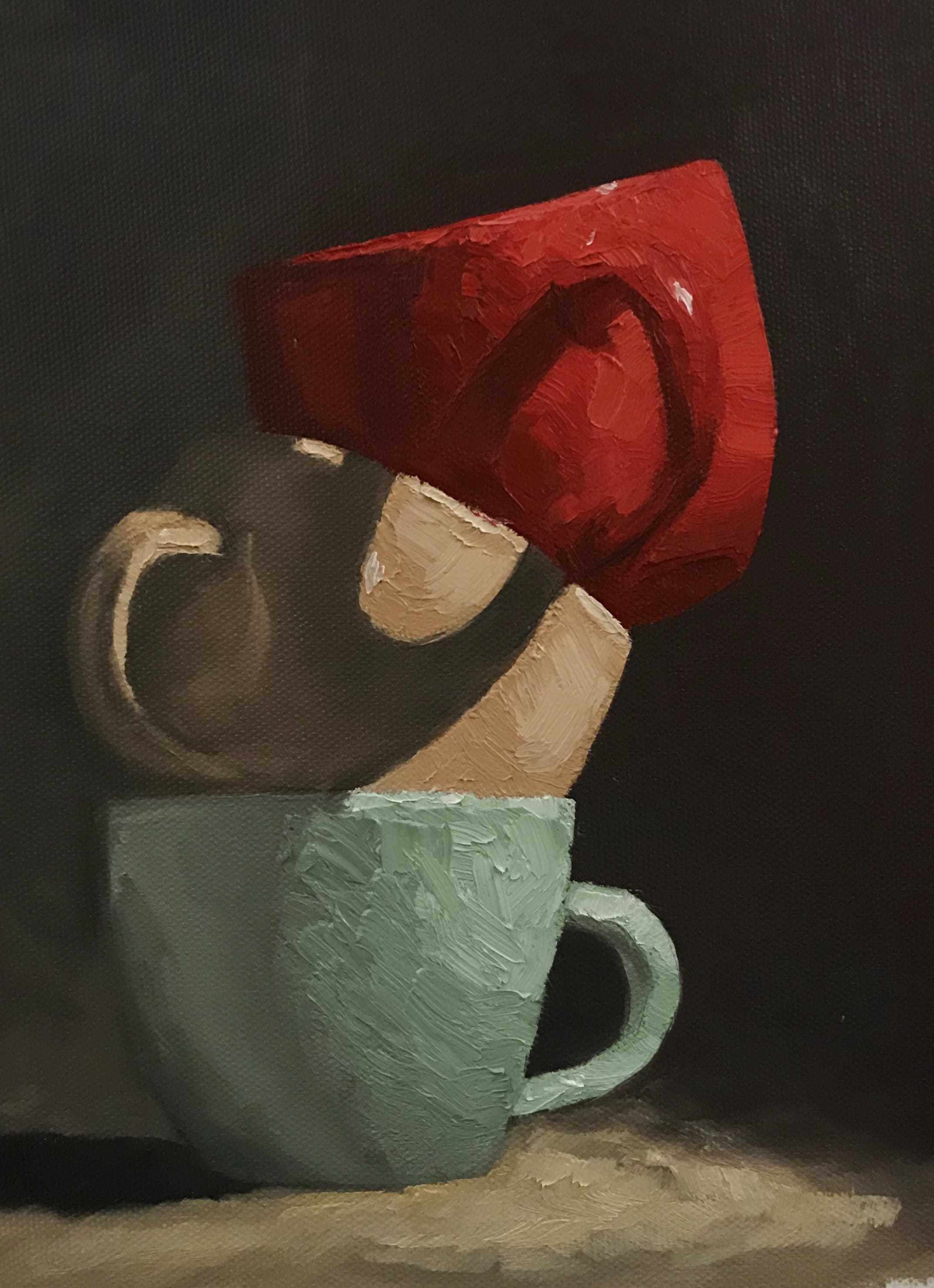3 Common Misconceptions about Oil Painting

Oil painting is a versatile and beginner friendly medium, contrary to popular belief! Keep reading to learn more about it. (Photo by Andrian Valeanu on Unsplash)
Have you ever wanted to try oil painting, but been put off because of things you’d heard about the medium?
If so, you’ll know that there are plenty of myths and misconceptions about oil painting and oil paints. Many people who have not tried oil painting can have preconceived notions and ideas about the negative effects of oils, and these ideas hold them back from ever trying the medium.
Don’t let misinformation hold you back from learning how to oil paint and becoming a great artist. Keep reading and let’s debunk a few oil painting myths!

Rather than oil paints, there are mediums like turpentine that are the toxic components of oil painting. However, these toxic mediums can be swapped out for safer mediums like linseed oil. (Photo by Old Holland)
Oil Painting is Toxic
This oil painting myth is fairly common. However, the majority of oil paint is not toxic. In fact, unless you eat your oil paint, which is never recommended, there are no adverse effects to most oil paints. Oil paint is made up of natural oil and pigment, and the majority of pigments are completely safe and non-toxic. There are a few toxic ones, like lead-white, cadmium, and cobalt, but they are only toxic if you eat or breath in the dry pigment before the oil is mixed. These slightly toxic colors can also be substituted out for synthetic alternatives.
Oil paint itself has no smell. The unpleasant, toxic smell many people talk about comes from the solvent (turpentine or white spirits) many artists use to help the fluidity of paint, cleaning, or drying time. Leaving open turpentine lying around will indeed fill a room with a toxic fume. However, there are safer alternatives to use, like linseed oil, which is a fairly scentless, safe alternative to turpentine. Brushes can also be cleaned with a bar of simple ivory soap, rather than turpentine to keep children, pets, and yourself away from the smell and touch of turps.
In addition, if you are using a high-quality paint, you can get away without using medium, using the paint straight from the tube. Medium is only necessary to change the characteristics of the paint. It can speed or slow drying, increase transparency, or increase fluidity, but can also be left out of your painting process entirely.
So the myth that oil painting is toxic really has little to do with oil painting, and more to do with unsafe practices and unnecessary mediums.

While some oil paints are expensive, because they are high quality and well pigmented, they last much longer, saving you money. (Photo by Old Holland)
Oil Painting is Too Expensive
Investing in top tier oil paint can be expensive, but lower quality paint lends a less desirable effect. Consider this: if you could invest in very pigmented, expensive paint that lasts longer and get better results, wouldn’t you take that over watery, inexpensive oil paint?
The lower quality paint, while more affordable, can hold you back. Better paint won’t make you a better artist, but as you learn, it won’t hold you back.
Student grade paint often yields the same result. Because extra binders (oil) is added to stretch the paint, there is less pigment and an excess of oil. This makes painting more difficult because the tools will prevent you from making your best work.
Investing in quality paints will also mean your tools last much longer. Because of the density of the pigment, the paint can be stretched farther with medium (and you can choose a safe one, like linseed oil). So rather than purchasing cheap paint constantly as you run out, a top-quality tube of paint can last much longer, saving you money.

Some techniques, like impasto or puddling, do take longer to dry. But by working in thin layers or directly painting, the oil paint is dry within 24 hours. (Puddled painting by Michael B.)
Oil Painting Takes Too Long to Dry
This common oil painting myth can be avoided. Oil paint only takes a long time to dry in very certain circumstances. Depending on the color, some oil paints will dry a bit slower than others, but if you are working with a smooth, thin, opaque layer of paint, your painting will most likely be dry within 24 hours.
However, certain colors like white may take a bit longer to dry depending on the application thickness. Painters who use the impasto technique, or puddling, will often have to wait a week or two for their paint to dry. Very, very thick impasto can take several months. But if you choose to work in a thinner manner, your paint will dry very quickly.
A medium can also change the drying time of the paint. Linseed oil helps paint to tack up and dry within six hours and be fully dry in about 24. Using just an alkyd, your paint will start to dry within four hours. But if you choose a medium like a clove oil, your paint may stay wet for several days to weeks.
These mediums can be helpful if an artist likes to work into wet paint, but certain mediums can also help to speed up the drying time.
The myth that oil painting takes too long to dry really depends on how you are painting, and in general, oil paint dries quite quickly.
Conclusion
There are many oil painting myths, but by looking a bit deeper, we can see that they can easily be disproved. Oil painting is a simple, safe way to create art and paintings and is suitable for students and professionals alike.
Now that you know some of the truths behind common oil painting myths, you’re ready to tackle the medium and discover the benefits of oil painting.



